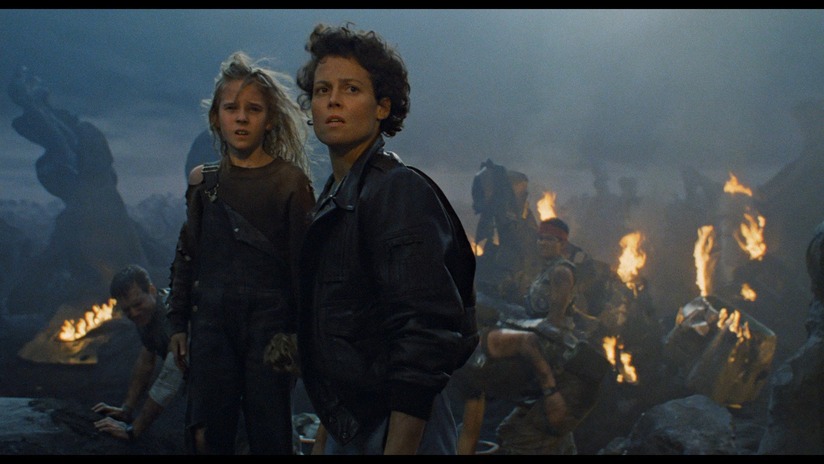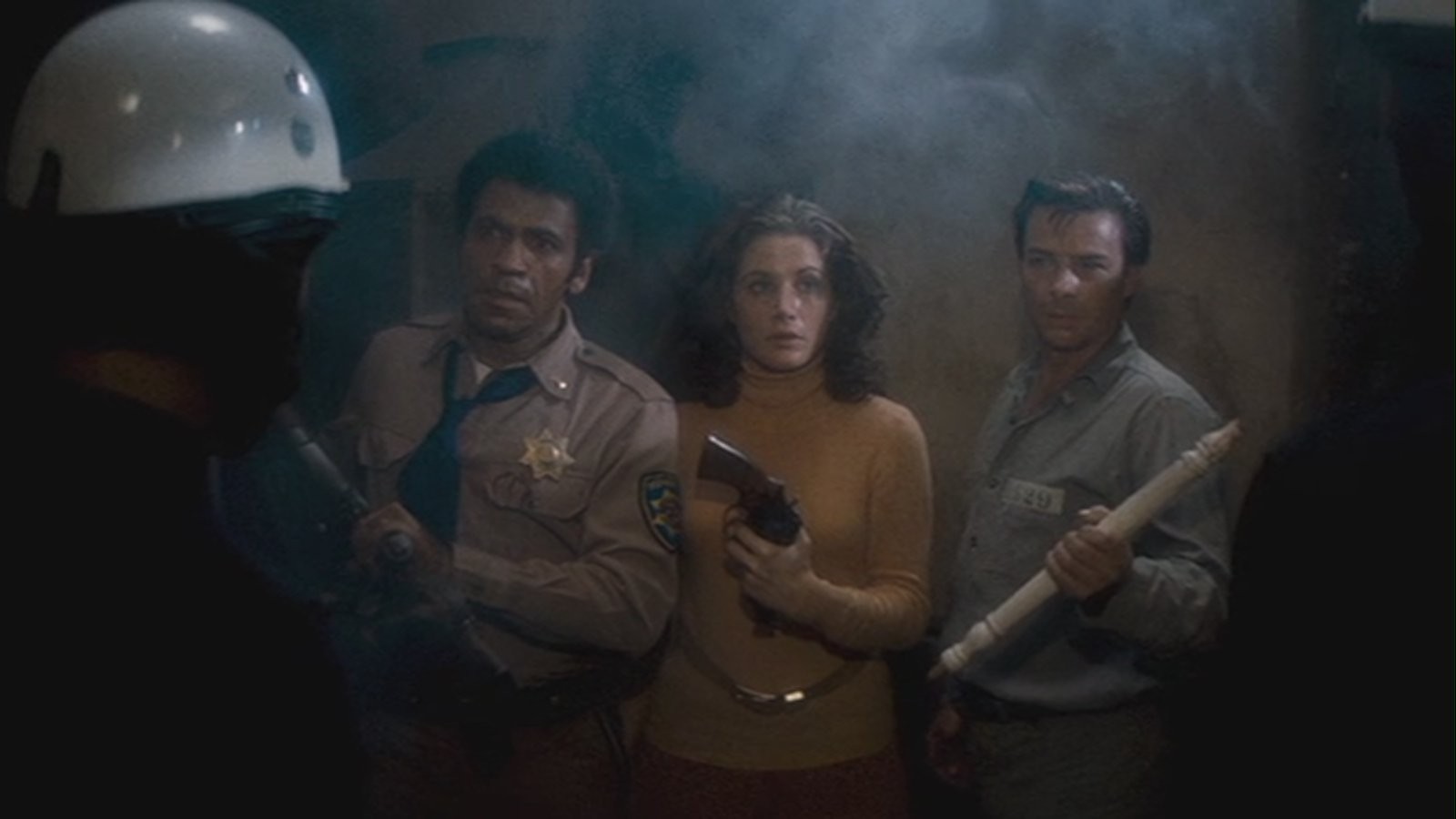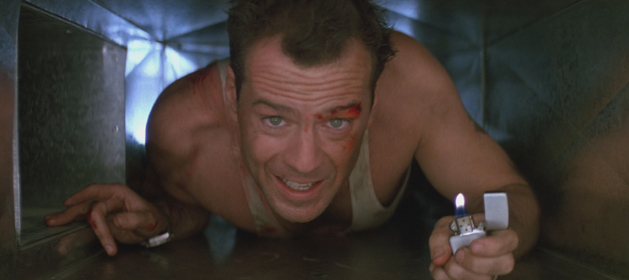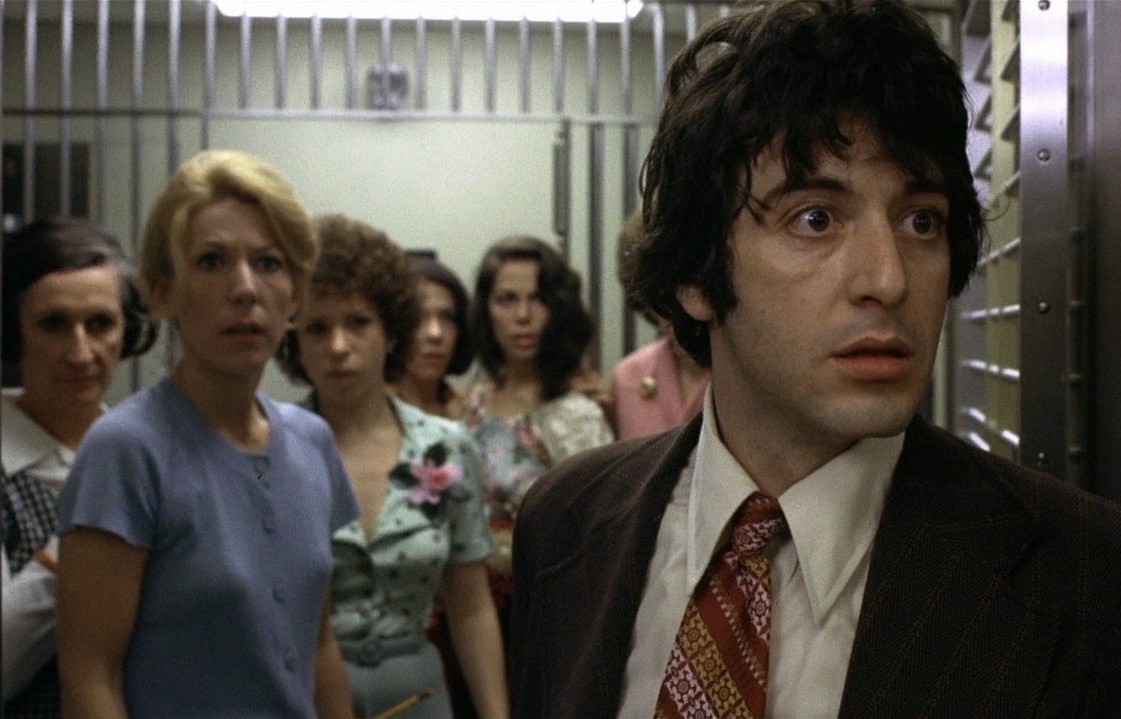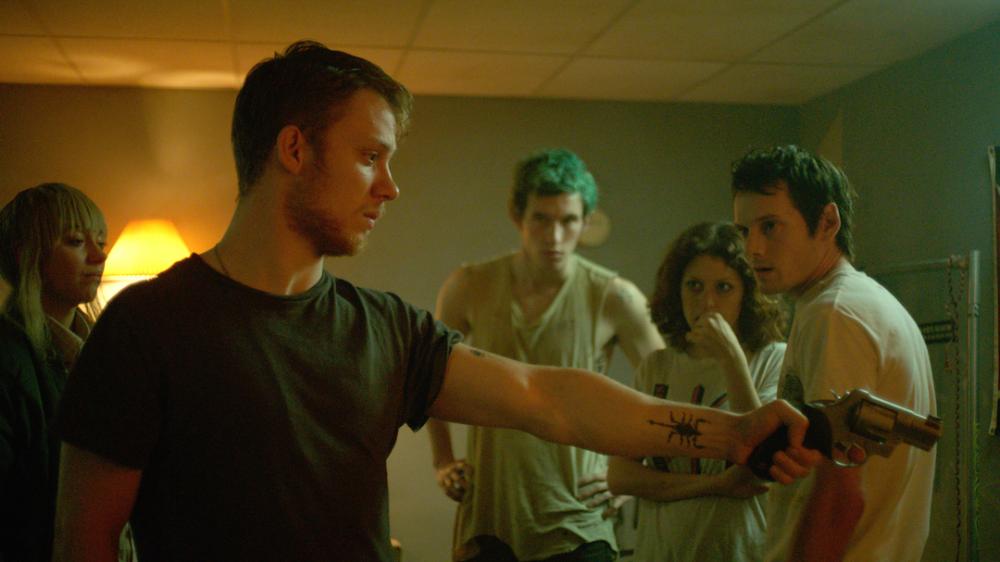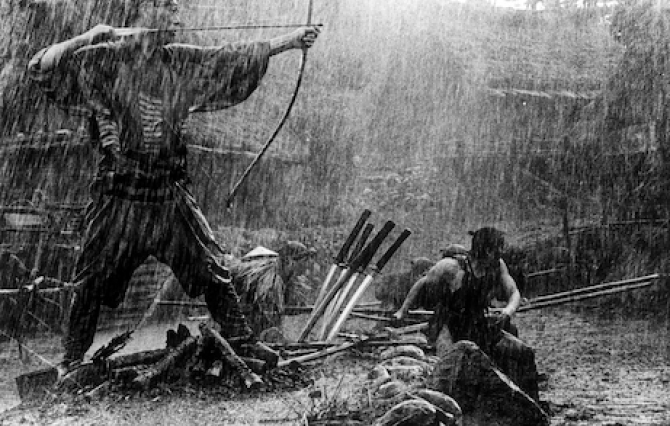7. Aliens (1986)
“Get away from her, you bitch,” spits Lt. Ellen Ripley (Sigourney Weaver), awash with mental anguish, maternal fortitude, and something very close to spite. Weaver, reprising her iconic role from Ridley Scott’s original Alien (1979) for James Cameron’s sensational sequel is iconic and amazing in her best known role.
The acid-drooling, chest-popping, phallus-resembling, teeth-gnashing nasties designed by H.R. Giger—just barely glimpsed in Ridley Scott’s original film—are here on terrifying display as they lay siege to Ripley and her space marine compadres in a sequel that arguably improves upon the original.
Cameron, who more than proved himself two years before with The Terminator (1984) continues his winning streak as he brilliantly and handily builds tension slowly and to crescendo in this intelligent actioner that is relentless in its propulsive physique, culminating in one of the decade’s most athletic and astounding actioners. Science fiction is rarely this frightening and remunerative.
6. Assault on Precinct 13 (1976)
John Carpenter’s first professional motion picture, Assault on Precinct 13 bears all of the director’s familiar hallmarks—including his awesome OTT electronic score—making for a stylish siege thriller that links elements of both the Western and the horror genre. Carpenter himself has happily proclaimed, “basically, this is an exploitation action picture modeled after Rio Bravo,” and there you have it.
Partially inspired by exploitation cinema, which had it’s heyday in the mid-70s, Carpenter’s crime-thriller doesn’t pull any punches in its violent depiction of urban violence and cultural disparity. When L.A. police massacre seven members of a troublesome street gang it incites the gang members to make a blood oath and swear vengeance via the destruction of the titular police station.
Carpenter wisely and intentionally avoids any socio-political false fronts, focussing on an alternately comedic and climactic thriller that owes a nod or two to Samuel Fuller (The Naked Kiss) and Don Siegel (Dirty Harry).
Assault on Precinct 13 still stands as one of Carpenter’s finest films, a genre mashup par excellence, an uncompromising cult classic like no other that slyly supports a subversive slant on racial and sexual politics. Outstanding.
5. Die Hard (1988)
Who knew that the foul-mouthed catchphrase “Yippee-ki-yay motherfucker!” would have such lasting power to weather some four sequels (with rumors of a fifth sequel, the sixth in the series, currently in the works) when we first heard it muttered from Bruce Willis’ cocky yet personable John McClane in John McTiernan’s action movie extravaganza Die Hard back in 1989?
Originally intended as another action vehicle for Arnold Schwarzenegger, whom McTiernan directed the year before in Predator, Willis, at the time only known as a comedic television actor, was a risky gamble that paid off hugely. As New York City cop visiting his estranged wife in Los Angeles over the Christmas holiday, Willis exudes charm and swagger.
Once in Lotus Land McClane is whisked from the airport via limo to his wife, Holly’s (Bonnie Bedelia) work, the sprawling Nakatomi Plaza building where a Christmas party is in full swing. Around the same time McClane arrives so does Machiavellian terrorist Hans Gruber (a scene stealing Alan Rickman) and his heavily armed Eurotrash syndicate of baddies including Alexander Godunov and Clarence Gilyard.
McTiernan goes gleefully overboard as he throws McClane into one adrenaline-pumping decampment after another with death-defying hurdles, a fusillade of firepower, and an onslaught of explosions in a steady procession. The script by Steven de Souza and Jeb Stuart, based off Roderick Thorp’s novel “Nothing Lasts Forever” is thickset with pitch-dark comedy and one-liners in a film that rejuvenated the action genre and is rightly considered something of a masterpiece.
4. Dog Day Afternoon (1975)
A stiff social commentary cocktail the mixes equal parts actual tragedy and histrionic absurdity, Sidney Lumet’s taut tale, Dog Day Afternoon, was based off a true story. Sonny (Al Pacino) and Sal (John Cazale) are a pair of hangdog would-be bank robbers in Brooklyn whose routine robbery quickly devolves into a hostage situation.
The hostage situation combined with Sonny’s showmanship attracts media attention as the police surround the bank and hopes of escape grow ever bleaker. With a relevant obiter dictum on America’s tendency for media overkill and victim-blaming – Sonny’s chants of “Attica! Attica!” really underscore this idea – offer what’s ultimately a bittersweet, even brutal, journalistic reverie.
Dog Day Afternoon is essential 1970s cinema that perfectly expressed the zeitgeist. Unforgettable.
3. Green Room (2015)
“The crowd there leans a little right,” warns a sketchy promoter to Pat (Anton Yelchin) and his noisy punk band, The Ain’t Rights. Normally they’d pass on the gig but they’ve been on the road awhile and are so low on dough they’ve had to siphon has just to keep the tour van rattling to the next show.
Backs to the proverbial wall The Ain’t Rights (which also includes Alia Shawkat, and Callum Turner) reluctantly agree, thus inconspicuously setting up a senses-shattering ferocious crime thriller cum horror film from Blue Ruin (2013) writer/director Jeremy Saulnier.
Upon arrival at their destination, deep in the Oregon boonies, Pat and company quickly realize they’re about to play a white supremacist skinhead hole, but what choice have they? Plowing through a set list that they kick off with a Dead Kennedys cover—the apt but inciting “Nazi Punks Fuck Off”—the gang just want to get their cash and go. But hopes of a hasty retreat evaporate when Pat and Sam (Shawkat) witness something truly chilling and stomach churning in the eponymous green room.
Faster than you can quip “neo-Nazi revival” our hapless heroes are barricaded in said room as the well-armed racist rabble, led by cruel and cunning ringleader named Darcy (Patrick Stewart, chilling) mobilize and move in for the kill.
Green Room is a vicious thrillride, and a brutal, unrelenting chef-d’oeuvre.
2. Dawn of the Dead (1978)
Primarily filmed at Monroeville Mall, in Monroeville, Pennsylvania – at the time one of the largest malls in the United States – George Romero’s Dawn of the Dead is a thematic sequel to his 1968 landmark horror film, Night of the Living Dead, itself an exemplar of the siege film.
An impoverished group of survivors led by Stephen Andrews (David Emge) have fled the zombie-ravaged inner-city and descended upon the mall to refuel and bone up on supplies. Here they discover they can secure the exits of the massive complex, at least temporarily, and use it as a strategic stronghold while they enjoy some creature comforts that they’ve been deprived since the zombie apocalypse began.
Romero cleverly scrawls a satirical through-line between flesh-eating zombies and soul-crushing capitalism offering a sharp critique of consumerist culture and the undead, comically and cleverly epitomized via the wounded shuffling gait of the zombies, arms outstretched, pathetically moaning to the mellow lull of Muzak as they wander to and fro inside the mall, like shoppers hungry for bargains and mindless shit they don’t really need.
Refracted through a post-Vietnam haze and perched as it were on the precipice of the Me decade, Dawn of the Dead succeeds as a caustic social commentary, as a siege epic, as a horror film, and as a black comedy.
1. Seven Samurai (1954)
Akira Kurosawa (Rashomon), who Steven Spielberg has described as “the pictorial Shakespeare of our time” made his most enduring samurai epic, Seven Samurai, in 1954, and it functions not unlike a classic John Ford Western—indeed it would be the basis for the gunslinging classic The Magnificent Seven (1960)—that has also stood the test of time as a ribald cultural crossover.
Sam Peckinpah (The Wild Bunch) once famously quipped: “I’d like to be able to make a Western like Kurosawa makes Westerns.”
Kurosawa’s classic concerns seven disgraced, and masterless samurai hired by an impoverished village to defend them against an evil band of outlaws who have been plaguing them for some time, ravaging their crops and instilling terror and panic as the severity of their crimes grow.
Amongst the eponymous seven samurai is their ronin master, Kambei Shimada, played magnificently by Takashi Shimura (Ikiru) and lion-hearted hanger on Kikuchiyo, played by the legendary Toshiro Mifune (Yojimbo), who each redefine heroism on their own astonishing and unexpected terms.
Also engaging is the rain-soaked final siege sequence, an energized miracle of black-and-white cinematography, breathtaking boldness and jaw-dropping action that even today, some sixty years on, remains unrivaled. An epic in every sense of the word.
Author Bio: Shane Scott-Travis is a film critic, screenwriter, comic book author/illustrator and cineaste. Currently residing in Vancouver, Canada, Shane can often be found at the cinema, the dog park, or off in a corner someplace, paraphrasing Groucho Marx. Follow Shane on Twitter @ShaneScottravis.
